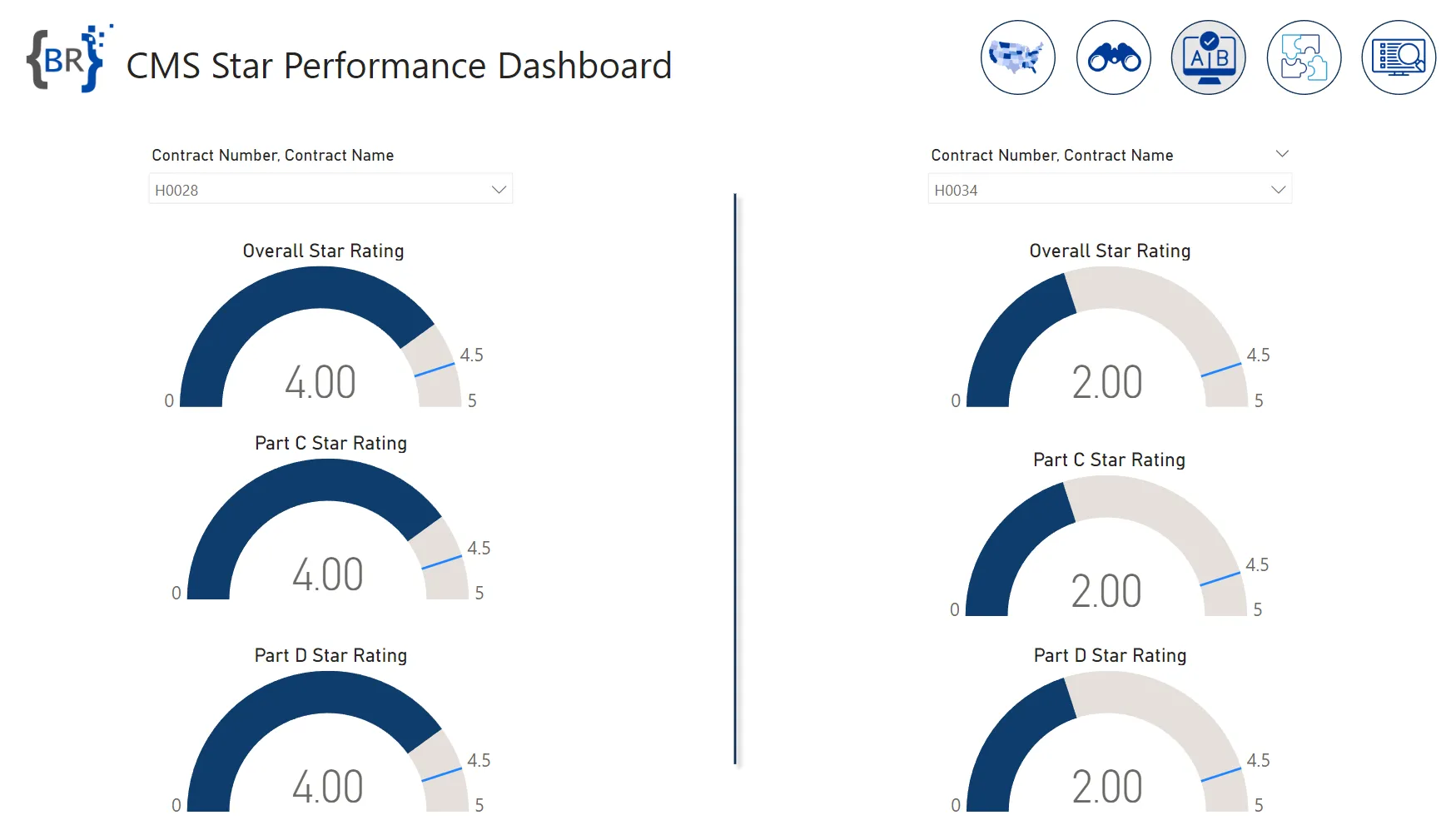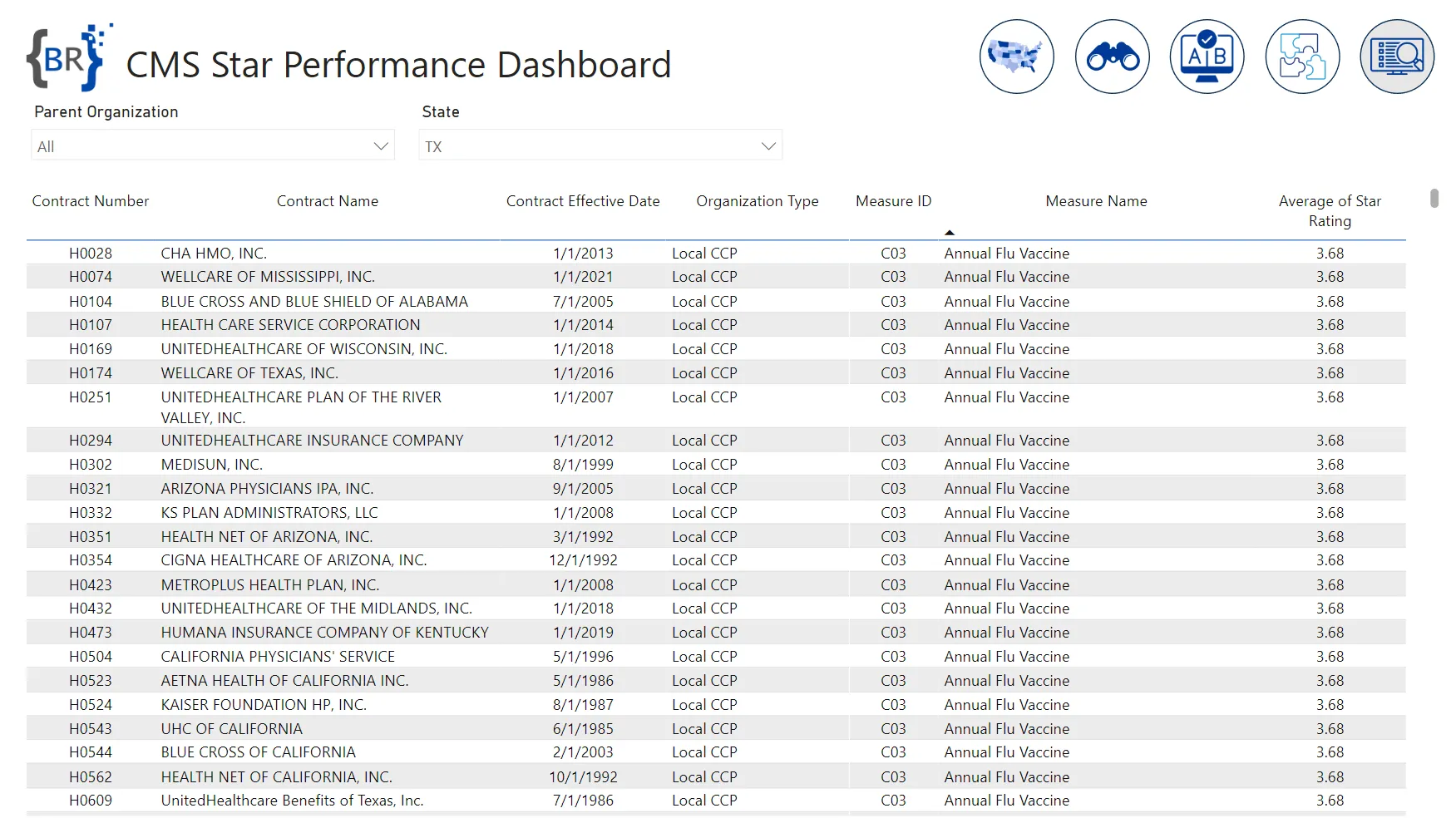CMS Stars Performance Dashboard
The CMS Stars Analytics Dashboard is a comprehensive Power BI dashboard that analyzes and visualizes Medicare Advantage plan performance based on CMS Star Ratings. The dashboard enables healthcare organizations to gain insights into their plans' performance across various measures, domains, and counties, facilitating data-driven decision-making to improve healthcare outcomes.
The CMS Executive Dashboard project involved extracting, transforming, and loading (ETL) data from the Centers for Medicare & Medicaid Services (CMS) and building data views to serve an interactive Power BI report. The dashboard visualizes critical information about CMS Star Ratings, disenrollment reasons, and county-specific performance metrics. By integrating the data into Power BI, healthcare executives can easily explore the data to identify trends, evaluate performance, and make informed decisions that drive improvement.
Key Features:
- Comprehensive Metrics Coverage:Provides visualizations of key CMS metrics, including Star Ratings, disenrollment reasons, and county-level summaries.
- User-Friendly Interface: Built with Power BI, allowing executives to explore data with intuitive, interactive dashboards.
- Detailed Breakdown: Displays data at various levels – by measure, domain, and county – to enable thorough analysis.
- Geographic Visualization: Map-based visuals to assess performance across different states and counties.
- Performance Insights: Highlights key performance metrics to assist in identifying areas for improvement and enhancing overall healthcare quality.
The data modeling for the CMS Executive Dashboard involved creating several SQL views, which served as the foundation for the Power BI visualizations. These views joined various tables related to contract information, disenrollment reasons, and CMS Stars data, ensuring that the data presented in Power BI was both accurate and meaningful.
Data Extraction and Loading:
Data Transformation (ETL):
Creating Views:
Data Quality: It was assumed that the CMS data was accurate and complete, requiring minimal data cleaning during ETL.
Consistent Naming Conventions: The views use consistent naming conventions to ensure that relationships between different datasets are easily understood.
Complete Data: Assumed that all relevant contracts and counties are included in the datasets provided.
Standardized Codes: Used standardized FIPS codes and measure IDs for data joins and aggregations.
Only Valid Numerical Values: Data quality checks were put in place to ensure only valid numerical values were used in the calculations. For example, any values that could not be converted to numbers were excluded from the calculations.





